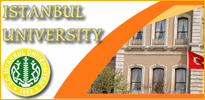Ukraine: Education
Ukraine Education Profile 2012
It is free at all levels, including college. Schooling is compulsory from age 6 to 17. Since 1990's the abolition of ideological training and an emphasis on the study of Ukrainian culture. Leading institutions of higher learning include Shevchenko State University and the Ukrainian Academy of Sciences; both are in Kiev.
State and private institutions for education, training and development exist in all fields and levels, but they vary greatly in quality. As a rule, little quality management exists. The number of private secondary education institutions is growing steadily, with the number of students who pay for their education on the rise. In the 2004-2005 period, 61% of students enrolled in post-secondary education paid tuition fees. Access to high-quality, recognized educational institutions often requires significant financial capability or corruption. One might say that there has been an informal privatization of the education sector. Support for lifelong education is outlined in the framework of the Millennium Development Goals. According to the UNDP, Ukraine spent 15.0% of its overall public expenditures on education in 2004. In 2003, the EBRD reported that Ukraine spent 8.6% of its GDP on health and education, which was lower than Poland’s 10.9%, but higher than Russia’s 6.6%. In 2006, 6.2% of Ukraine’s GDP (19.3% of government spending) was dedicated to education. Ukraine is suffering from a brain drain, particularly in technology and the natural sciences, both to Russia and the West. Expense on R&D has decreased, amounting to 1.3% of GDP in 2003 and just 0.93% of GDP in 2007. The number of innovative industrial enterprises continues to fall.





















